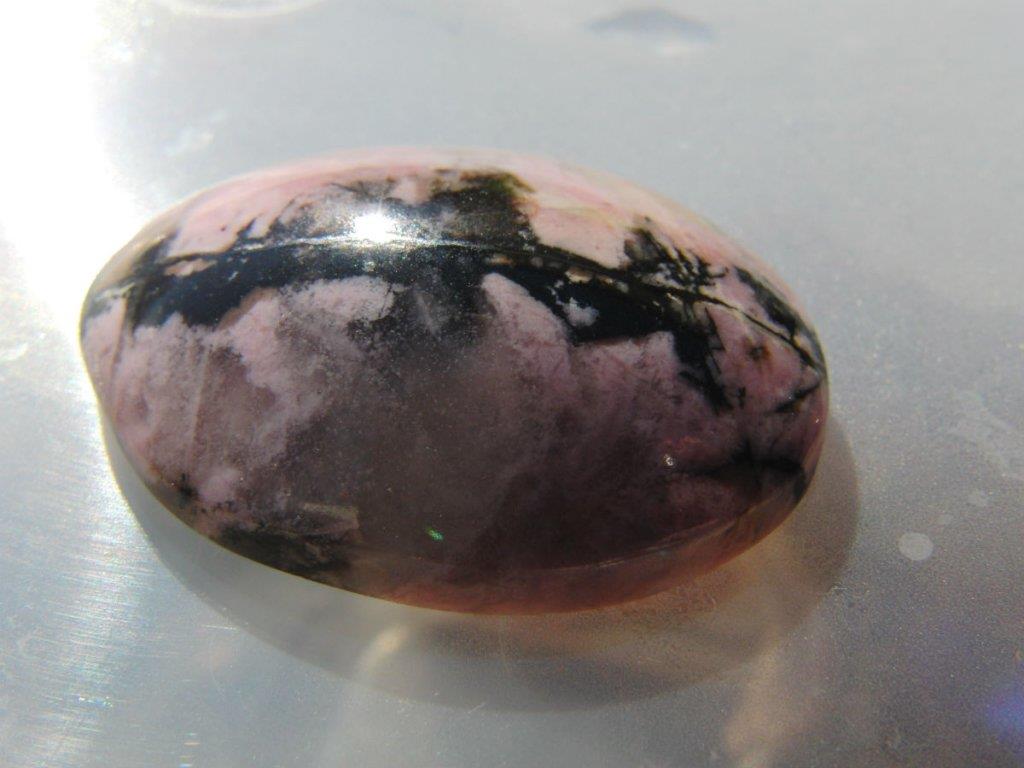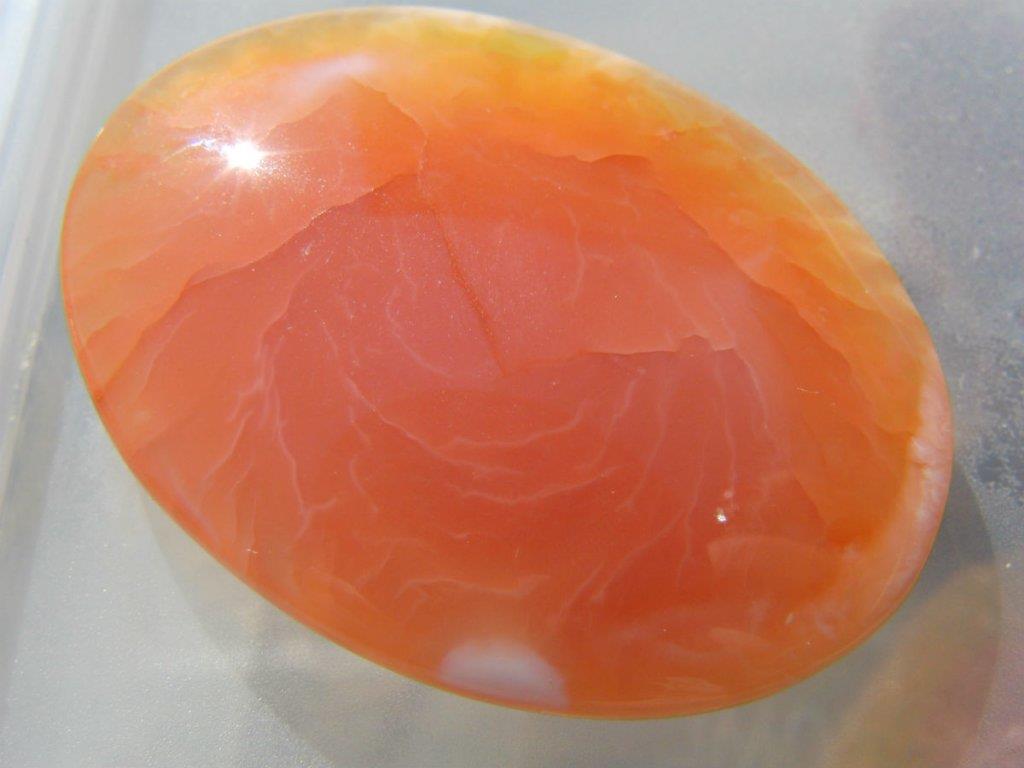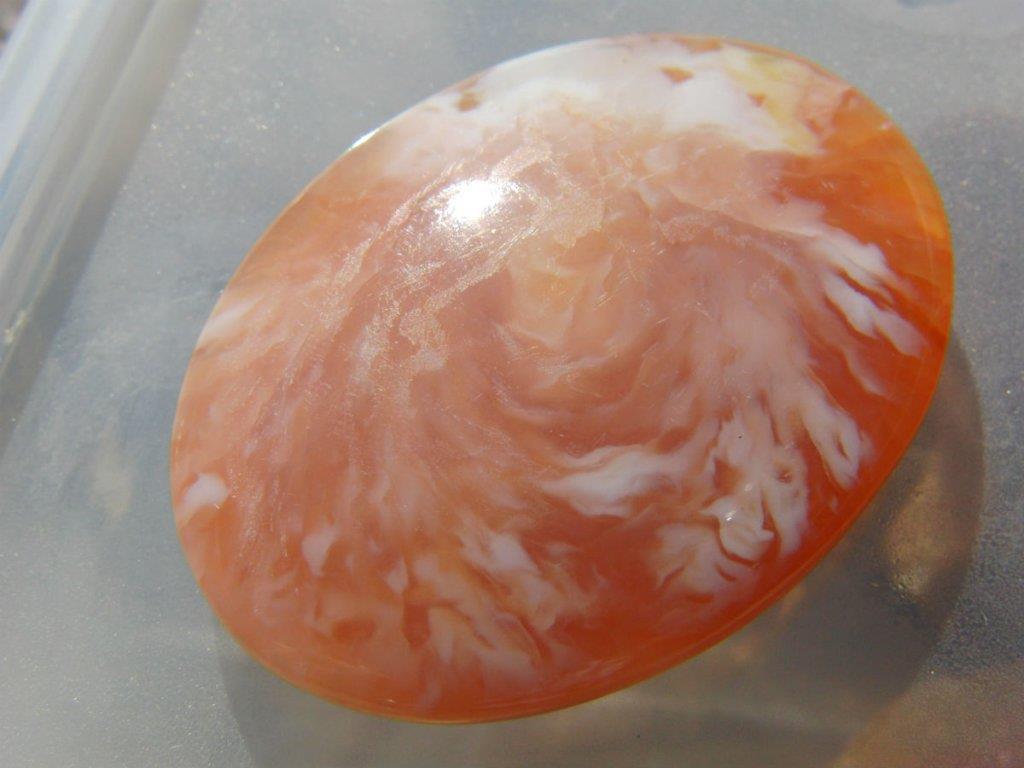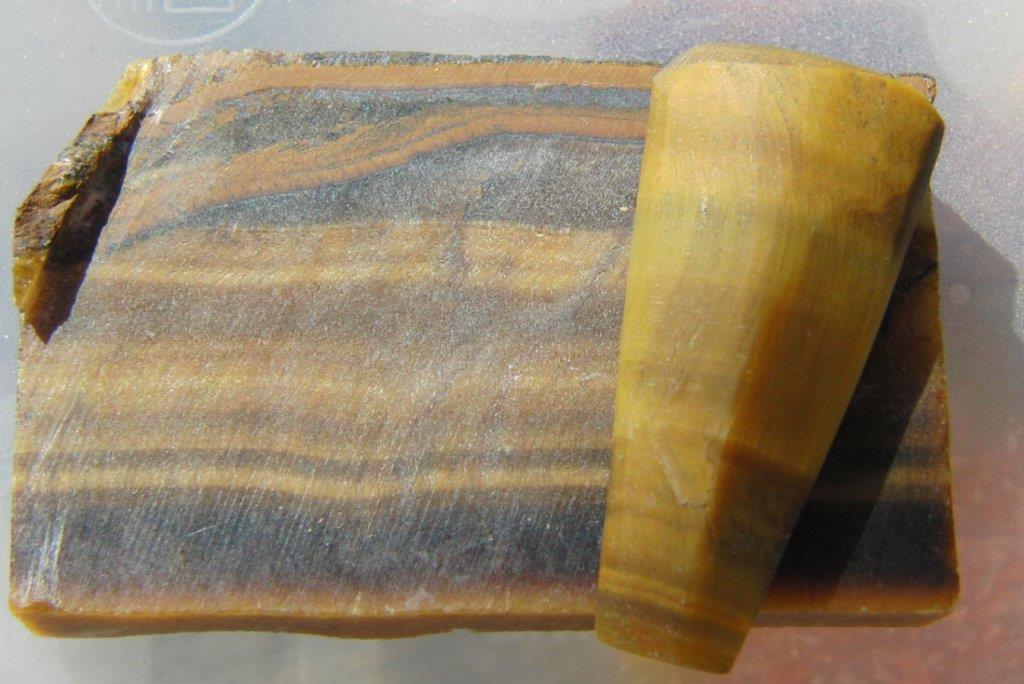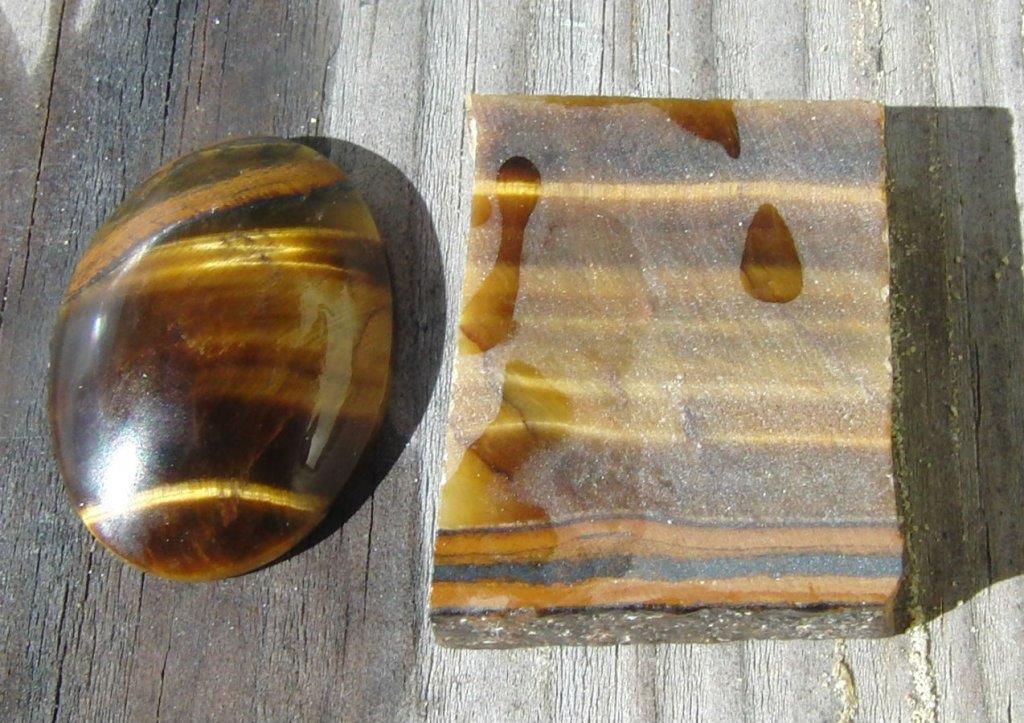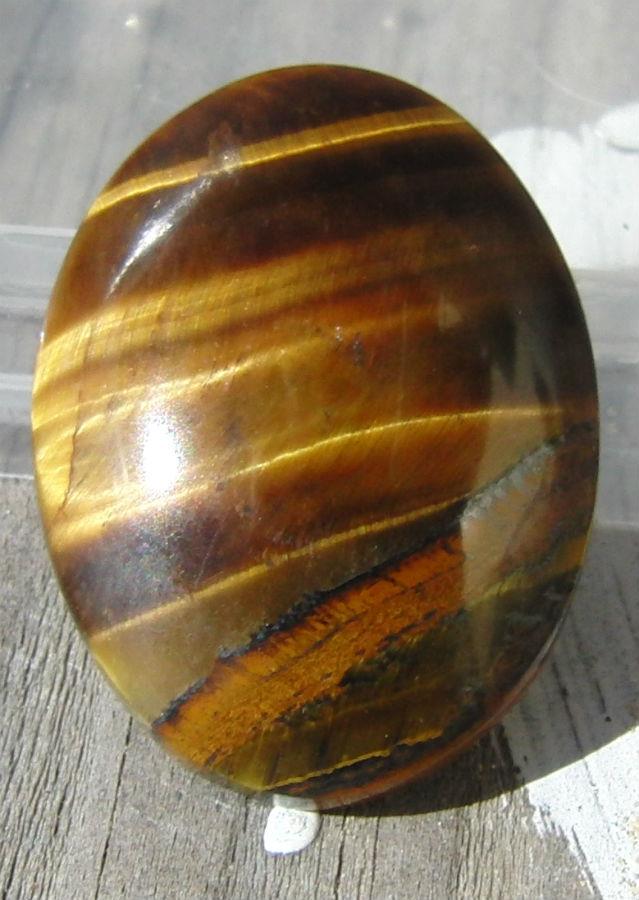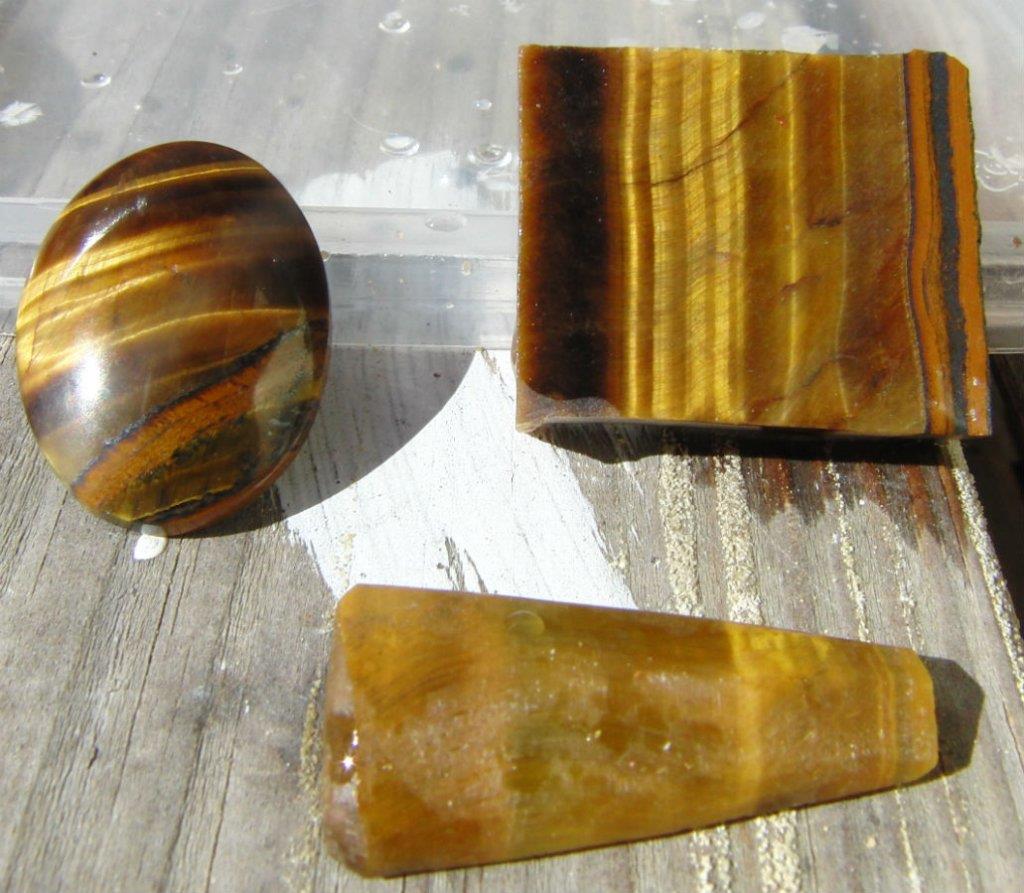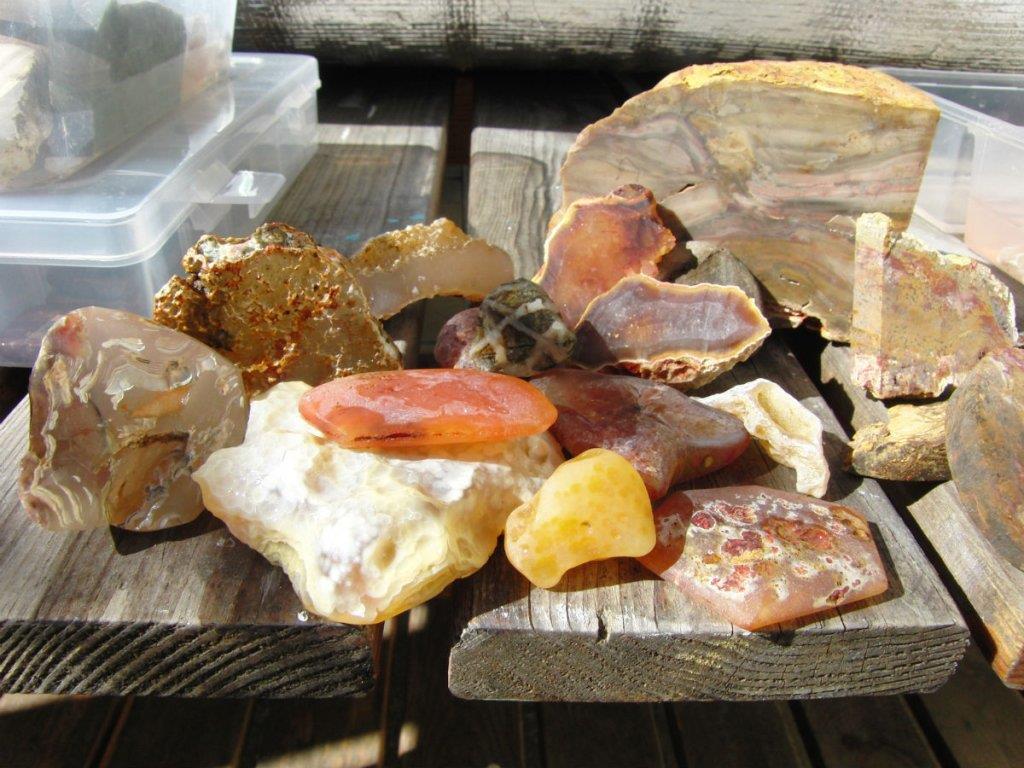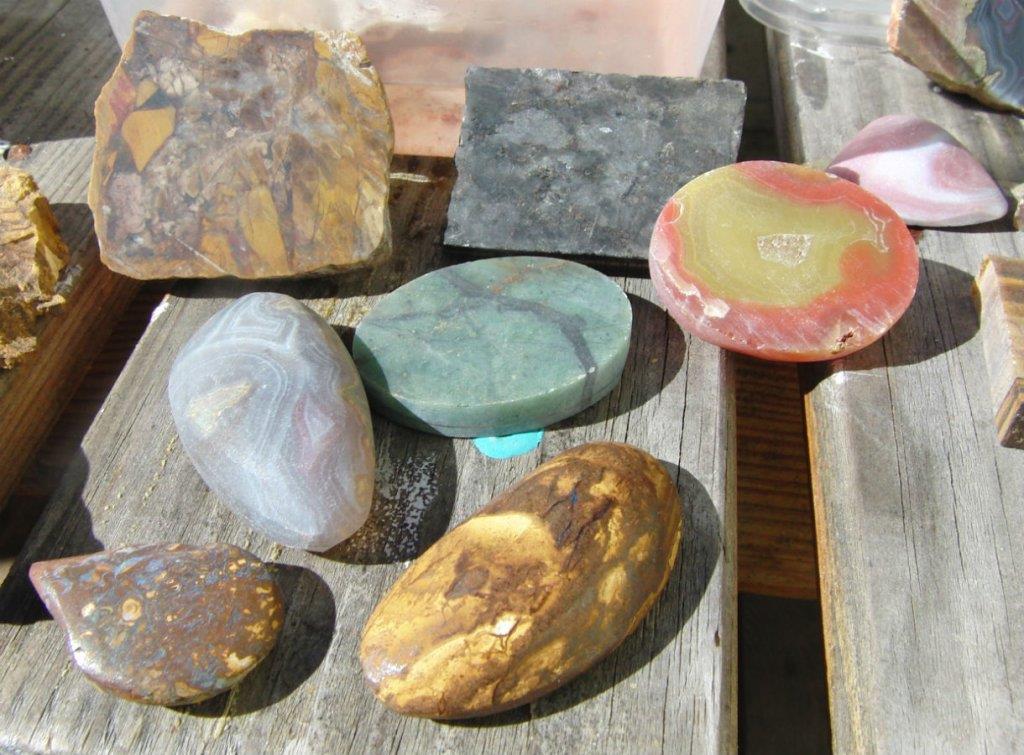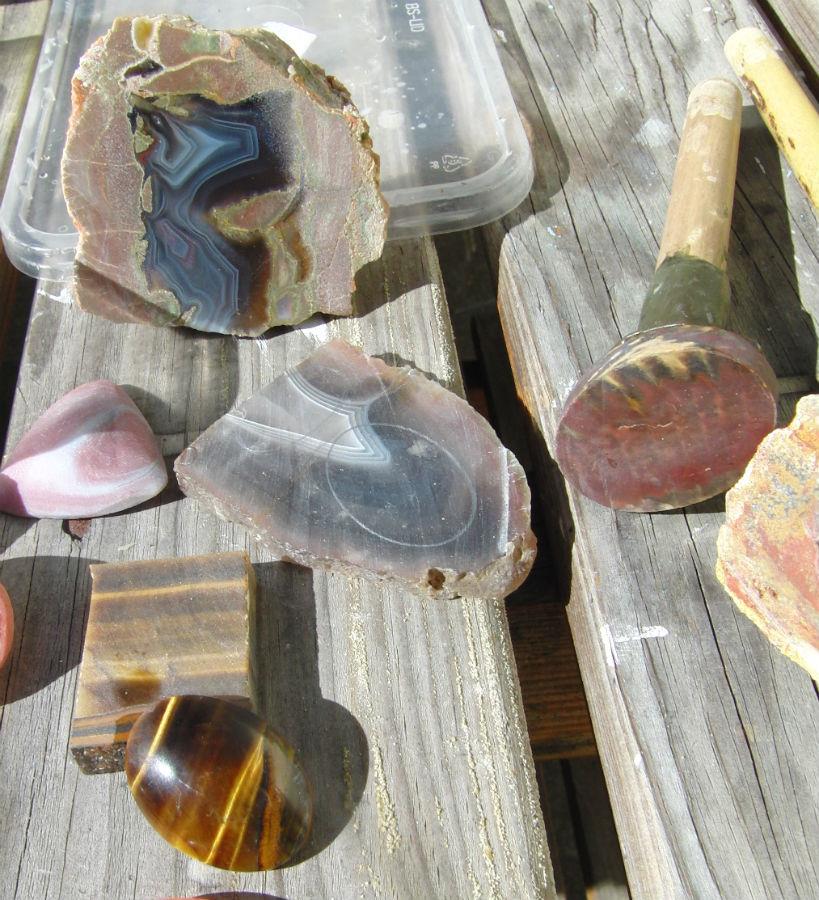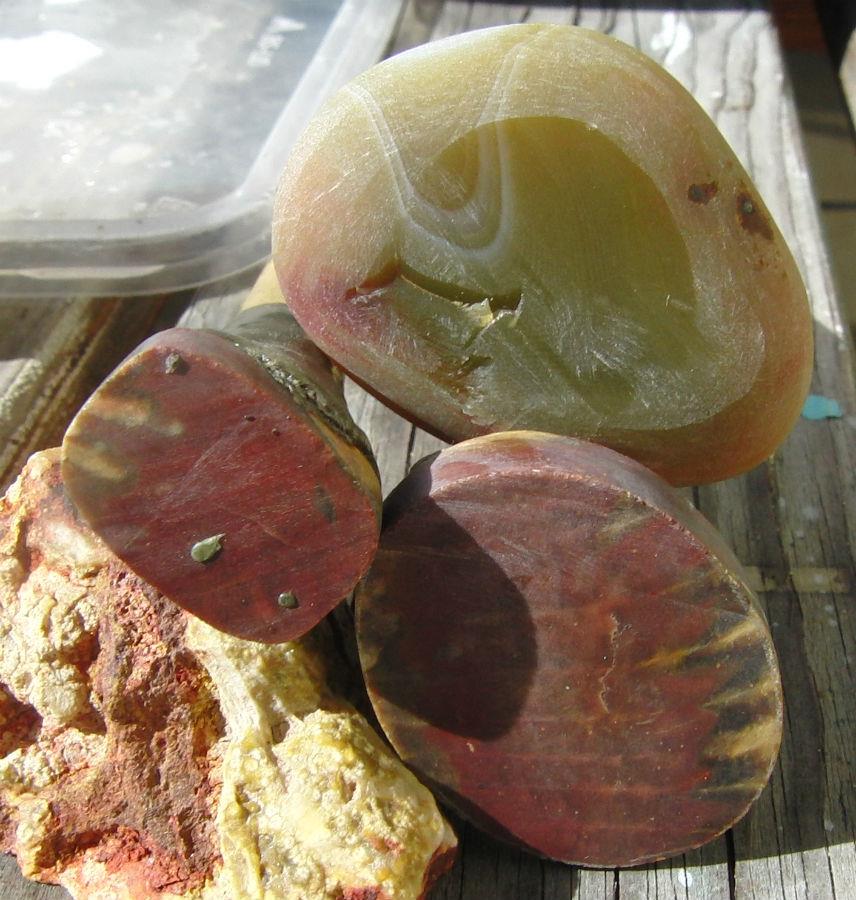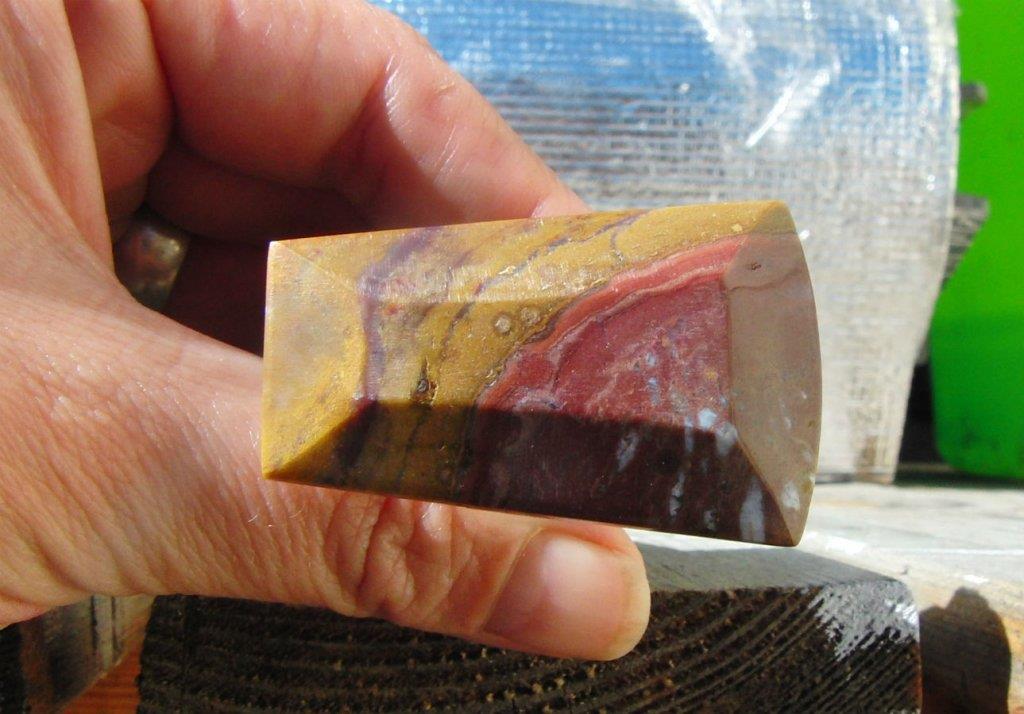Here's some more "doodles"
All these pieces are carnelian/chalcedony found on the beach here, except for the big one in the back and the small piece in the center. The center piece is from the beach, but isn't chalcedony. It's quarts in something else. It's interesting because the quartz is formed in my initial. The providence of the big piece is unknown and I can't tell you what it is either, just that it's pretty.
The 3 orange/brown pieces right of center from the top are from the same stone. The two upright ones are the end pieces and are waiting for a polish, the middle section has been free formed and is now ready to start the polishing process.
The piece left of center has been roughly cleaned on a grinder and I now have to decide what to do with it. Probably polish it in a tumbler, as it's too oddly shaped to turn into a cabochon.
The piece hiding out in the back and the one right in front of it are 2 sizable chunks of blue-ish, or milky white chalcedony. These will make lovely freeform pieces and one of them is probably big enough for a sizable cab.
Taking the front stage are two Koroit boulder opal doodles. Pro tip: when buying boulder opal rough, look for the darkest matrix. The light stuff is useless. It's so soft you can scratch it with a fingernail and there isn't a chance in hell you'll get a polish on it. But, for practicing working with (boulder)opal it is alright material, as it's generally cheap. Boulder opal rough can be quite expensive and if you see some that is light in colour and high in price, leave it and get something else. Unscrupulous dealers should be pointed at and ridiculed.
In the center an agate/chalcedony cab that I cut out of a Mount Hay thunder egg (Cutting those things open is addictive, it's like a pokie, the results can be great fun or deep dissapointment.
The green preshape is prase and the yellow and orange preshape next to it is agate from Agate Creek. The little triangle shape hiding behind it is also from Agate Creek. This one is blue and red. The little slabs in the back are again of unknown origin.
In the back is the other half of the Mount Hay thunder egg. It needs another run through the polishing process. The chalcedony/agate polished up just fine, but the softer rhyolite needs more attention, or another process. Have to find out how to handle this some time, for now it's just happily sitting between the rest of the work in progress pieces. The slab in front of it is another Agate Creek agate. This one was discarded because it has a crack in the center over the full width of the stone. I think that makes it an ideal practice piece for yours truly

The rest of the stones in this pic have been previously introduced.
Some preshaped doodles on the dop.
Another agate and 2 pieces of petrified wood. May have to turn the bigger one over to see if the other side looks as good, but without cracks. Otherwise I'll just have to work with it. It might be shallow enough to dissapear when forming the cab.
Last one...
Not really a doodle, but a serious attempt at an altogether different style of cabbing. This is not a freeform, it's still a calibrated shape (this means it will be easy to find a setting for it, it has standard dimensions, no need to make a special setting). The style is different from standard domed cabochons however. And it's a bitch to do, but a great challenge. The challenge is similar to facetting, with each pass over the grinder/prepolish you run the risk of rounding the corners of the facet you're working or the one adjacent. When going through the prepolish steps you'll have to watch how you hold your stone and touch it against the paper or the edges will get to rounded. And then there's the extra challenge that the tail end isn't supposed to be flat like the other sides but lightly domed and rounded. What an unbelievable bitch! But I love it and will be working on it again tonight.
